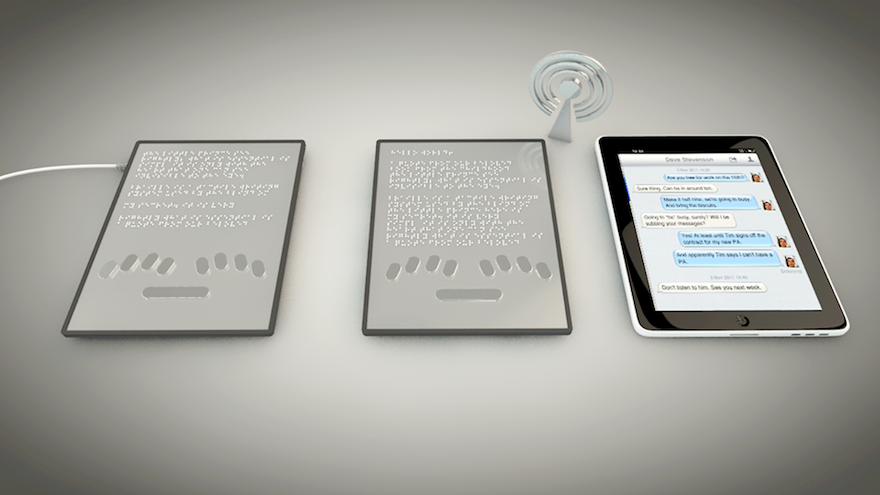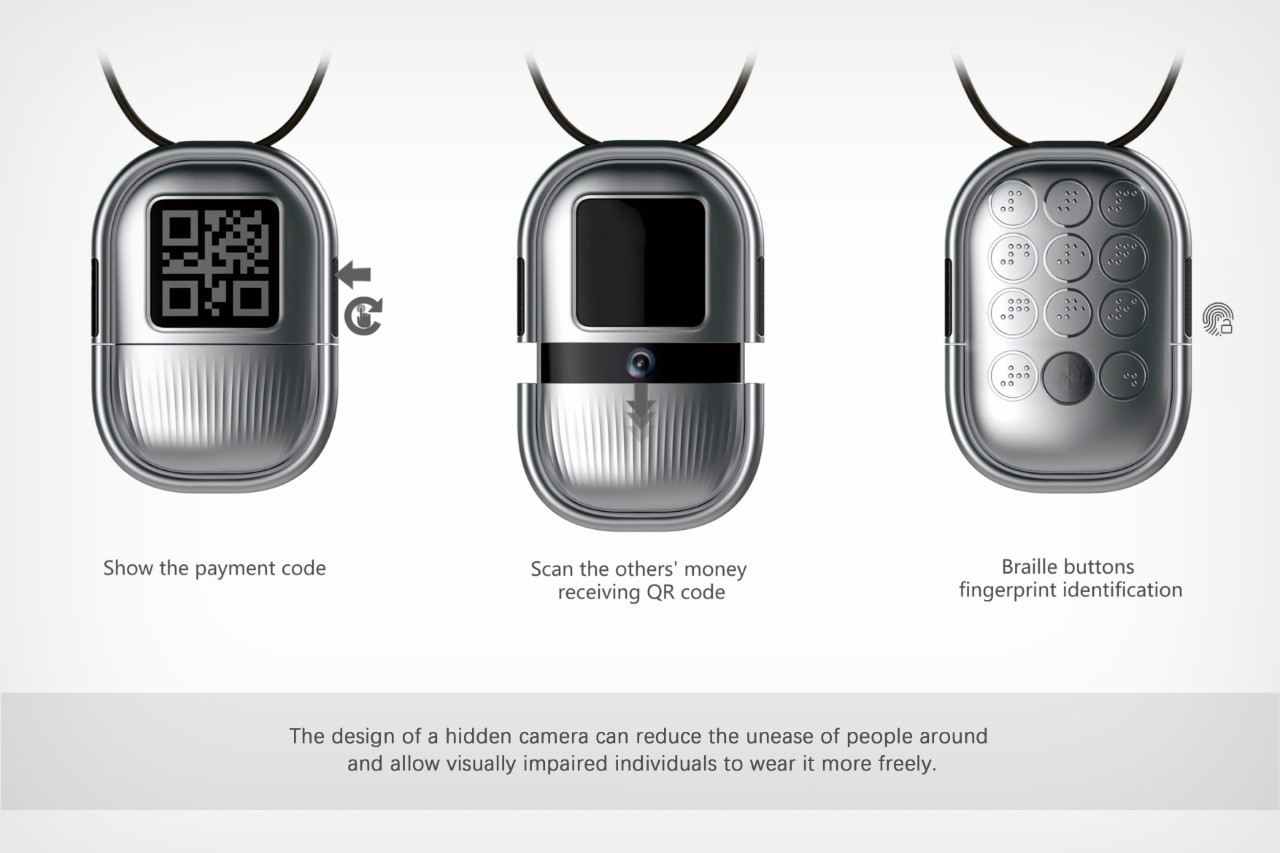Empowering Self-reliance With Assistive Modern Technology for the Blind
The integration of assistive modern technology into the lives of individuals with visual disabilities represents a substantial development in advertising freedom and self-sufficiency. From innovative display visitors to advanced wise walking sticks, these devices not only improve daily navigation and interaction yet additionally equip individuals to involve meaningfully in different facets of life. As we explore the myriad advantages and real-world applications of these modern technologies, it comes to be important to examine the underlying factors that add to their efficiency and the potential for future developments in this vital field.
Introduction of Assistive Modern Technology

The growth of assistive modern technology is grounded in concepts of inclusivity and empowerment. Developments in software, equipment, and sensory improvements provide users with options tailored to their certain demands. From display readers that convert message to speech, to tactile tools that share information through touch, these tools transform the way people involve with their environments.
Along with useful applications, assistive innovation promotes higher social inclusion and involvement in different sectors, consisting of education and learning and work (OCR devices for the blind). As research study and growth continue to advance, the capacity for assistive technology to better improve the lives of visually damaged people stays promising, leading the way for a much more fair society where everyone can grow
Kinds of Assistive Tools
A variety of assistive devices have actually emerged to sustain individuals with aesthetic impairments, each made to fulfill certain demands and boost everyday performance. These devices vary from low-tech services to high-tech developments, providing diverse choices for customers.
Low-tech tools consist of magnifiers and large-print products that assist in reading and writing. Braille devices, such as Braille slates and styluses, make it possible for responsive reading and communication. Alignment and mobility aids, like white walking canes, assist individuals browse their setting safely.
On the higher end of the range, electronic magnification systems and display viewers offer substantial support. Digital magnifiers enable users to expand text and photos on screens, while display viewers convert electronic web content right into synthesized speech, assisting in access to information on smartphones and computers.
Mobile phone applications additionally play an important role, giving features like text acknowledgment and navigating aid. Wearable technology, such as clever glasses equipped with increased truth, is emerging as a promising device to boost situational awareness.
Advantages of Assistive Technology
The assimilation of assistive innovation dramatically enhances the top quality of life for people with aesthetic problems. These innovations encourage individuals by advertising independence, allowing them to navigate their settings better and perform everyday jobs with higher simplicity. As an example, screen readers and zoom software application permit people to gain access to digital information, fostering specialist and academic chances that may have previously been out of reach.
Additionally, assistive gadgets such as smart walking canes and GPS applications provide real-time navigating assistance, enhancing wheelchair and safety and security. This raised autonomy not just improves self-worth yet also encourages social interaction, enabling customers to participate even more completely in their communities.
Assistive technology also promotes communication, helping customers link with others through voice recognition and text-to-speech applications. This capacity is crucial for keeping connections and accessing vital information.
Additionally, the modification alternatives readily available with several assistive innovations make certain that customers can customize tools to their details demands, better boosting use and efficiency. In general, the benefits of assistive innovation for people with visual problems are extensive, promoting a much more comprehensive culture where every person can seek their objectives and goals.
Study and Success Stories
Highlighting the transformative influence of assistive technology, various case research studies illustrate exactly how individuals with visual impairments have actually effectively incorporated these tools right into their every day lives. One engaging instance entails an university trainee that made use of screen reading software to navigate on-line resources and scholastic materials efficiently. This technology not just facilitated her education but additionally boosted her self-confidence in taking part in conversations and team tasks.
One more study features an expert that utilizes a smart device application designed for navigating and object acknowledgment. By using this application, he has actually gained back freedom in both his personal and work atmospheres, permitting him to commute separately and involve with coworkers extra properly.
Furthermore, a retiree shared her experience with braille e-readers, which enabled her to access a huge variety of literary works and stay connected inexpensive eye exams near me with her area via book clubs.
These success tales underscore the crucial role of assistive modern technology in fostering self-reliance, improving high quality of life, and advertising social assimilation for individuals with visual disabilities (Braille displays and notetakers). By embracing these ingenious tools, individuals can get rid of obstacles and seize opportunities that add to their professional and individual fulfillment

Future Fads in Assistive Technology
Technology in assistive innovation is positioned to redefine the landscape of support for people with visual problems. Emerging fads emphasize the assimilation of expert system (AI) and artificial intelligence, which boost the performance of devices that aid with navigating and information ease of access. AI-driven applications are currently qualified of interpreting visual information in real-time, making it possible for users to engage with their environment more individually.
Furthermore, the advancement of wearable technology is advancing quickly. Smart glasses furnished with augmented reality (AR) can give audio descriptions of environments, changing just how individuals engage with public areas. These devices not just promote freedom yet likewise foster social addition.
Furthermore, the Net of Things (IoT) is making homes smarter, permitting seamless connectivity in between day-to-day home appliances and assistive tools. This connectivity empowers individuals by making it possible for see this page automatic responses and voice-activated controls customized to individual needs.
Conclusion
In conclusion, assistive technology plays a critical function in equipping people with visual impairments by improving their self-reliance and involvement with their environments. The diverse series of gadgets and applications offered not just assists in navigation and interaction however likewise advertises social combination and possibilities for personal and professional growth. As improvements continue in this area, the potential for enhancing the quality of life for those with visual disabilities will broaden, fostering greater autonomy and empowerment.
